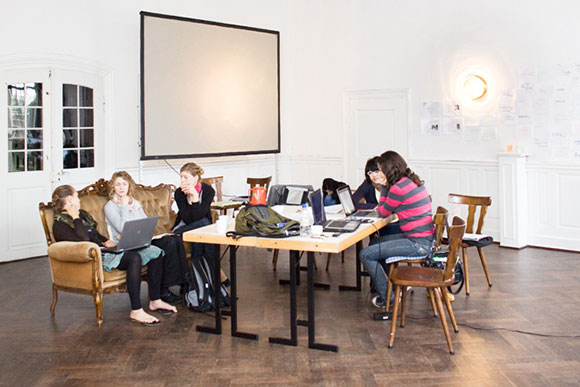
07 Okt Design and Sustainability
by Prof. Dr. Brigitte Wolf (1st Sustainable Summer School)
Every day the news media predict new doomsday scenarios involving global warming-induced climate change resulting from our excessive use of resources and energy. Journalists repeatedly reflect upon the fact that we know we have to change and that we have at our disposal the knowledge and the technological capabilities to act. So why do we hesitate? Most likely there are several reasons, including issues such as comfort, habits and rituals (we have always done it this way), lack of awareness, lack of knowledge as to how to begin, lack of tools and methods, and insecurity. On the other hand, a growing number of people are beginning to seek alternative and sustainable products and services. People who share in the idea of a life of health and sustainability are known by the acronym “LOHAS”. LOHAS are neither viewed as a special target group with a questionable image nor are they characterised by a certain age or income. According to a Zukunftsinstitut study, LOHAS represent a movement that is made up of many different parts of the world’s population.
Speaking on the subject, Stefano Marzano, design director at Philips, is certainly not alone in his beliefs. “Designers have aspire to a better world, and deep-down they feel somewhere an urge to create an ideal world – a world of beauty, hope, happiness, advancement, health, well-being, wealth, simplicity, collaboration, and empowerment … a world in which everything is in harmony and balance, in which everything is as it should be.”2 In the daily routine of the design business, however, such idealistic notions often take second place to primary economic interests. Nevertheless, designers with experience in varying design professions will shape the future conditions of everyday life. Every single designer has to carry some part of the responsibility. In light of the problems we face today, the design leadership consultant Raymond Turner provides important direction: “The question is not what the future will be like, the question is what the future should be like.”3 Awareness and attitude always determine the strategic targets, and the defining of the desired sustainable targets is the most important step towards change.
Nowadays, critical consumers are well informed. They express a growing demand for sustainable solutions, and they look for products and services that stand out against mass-produced goods. The eco-social added value of products and services will be a decisive factor in future consumption. Enjoyment and sustainability no longer represent a contradiction in terms. In addition to the ecological factors, esthetical quality is also an important concern. Consumers will seek out products and services that combine eco-intelligence with good design. Design matters! Design can play an important role in shaping the future in an environmentally friendly manner.
The Zukunftsinstitut study points out that new environmentally-aware consumers will contribute to a social value shift. Contrary to the eco-movement of the 1980s, the new “greens” are no longer characterised by spartan, rustic, and joyless lifestyles. Instead they are connoisseurs and trendsetters who have discovered that quality of life is not related to the amount of material products they own. Their life’s motto could be summed up as “less but better”. They want to achieve a satisfying balance between work and private life and attach great importance to a healthy lifestyle, excellent services, wellness, regional foods, organic production, and protecting the environment by saving energy and resources. Their slogan is taking pleasure in enjoying good quality of products and services that do not pose a threat to the environment. Even celebrities have discovered the new eco-chic, and they now represent an important driving force behind the movement.
Books such as Paul Ray’s The Cultural Creatives – How 50 Million People Are Changing the World or Richard Florida’s The Rise of the Creative Class point out that more and more people today are earning their livings in the creative industries. People with a good education and creative jobs usually make up the spearhead of today’s environmentally-aware movement and form a new elite driven by inner values that combine a demand for new solutions with a desire to act responsibly. Sales of sustainable products and services are growing. Consumption values have … read the complete publication here >>


